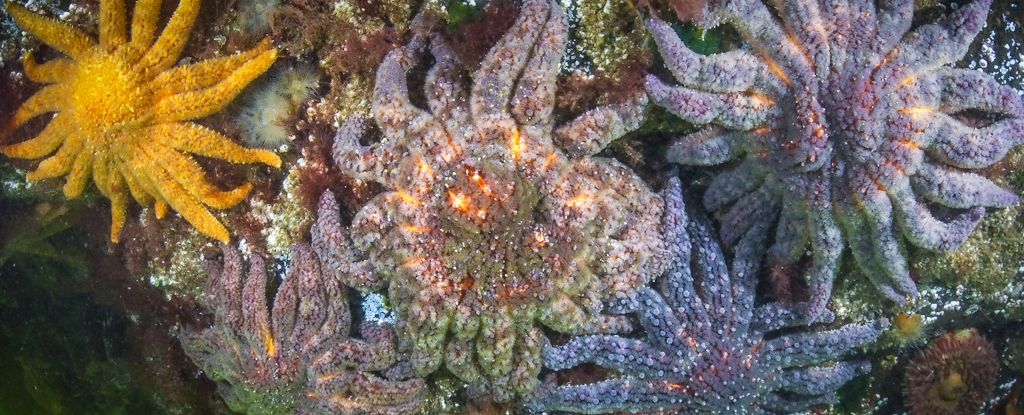
Billions of sea stars have succumbed to a devastating illness known as sea star wasting disease, which has significantly impacted marine ecosystems along the west coast of North America and beyond. After four years of intensive research, scientists have identified the pathogen responsible for this epidemic: a bacterium called Vibrio pectenicida. First reported in November 2013, this outbreak has affected more than 40 species worldwide, causing alarming declines in sea star populations.
The disease manifests through lesions on the sea stars’ bodies, leading to muscle disintegration and the eventual loss of their arms. Within days, these creatures die, with the sunflower sea star (Pycnopodia helianthoides) experiencing a dramatic population decline of over 90 percent during the early years of the outbreak. By 2015, these vibrant starfish, recognized for their stunning orange and purple hues, had nearly disappeared from the shores stretching from Alaska to Mexico. In 2020, the International Union for Conservation of Nature declared them critically endangered.
The absence of sea stars has had dire consequences for their ecosystems, particularly for kelp forests, which are vital habitats for numerous marine species. Sea stars play a crucial role in controlling sea urchin populations, which feed on kelp. Without sea stars, urchins have proliferated, leading to the degradation of these underwater environments. Kelp forests are essential not only for marine life but also for their ability to absorb carbon dioxide and protect shorelines from storm damage.
The discovery of Vibrio pectenicida as the causative agent of sea star wasting disease sheds light on a complex issue. Marine ecologist Drew Harvell from the University of Washington highlighted the challenges researchers faced in identifying this bacterium. Unlike other pathogens, Vibrio pectenicida does not readily appear in histological examinations, possibly due to its ability to produce toxins that inhibit immune responses.
The research team, led by evolutionary ecologist Melanie Prentice, conducted controlled exposure experiments using sunflower sea stars bred in captivity. The team exposed healthy starfish to infected tissue and fluids, observing rapid deterioration and characteristic signs of the disease. The results indicated a bacterial origin, as healthy starfish survived exposure to filtered or heated infected materials—an indication that a virus was not responsible.
Through RNA sequencing of samples from both laboratory and natural environments, researchers confirmed the presence of Vibrio pectenicida. This strain, known as FHCF-3, was isolated and used in further experiments that replicated the wasting symptoms. Alyssa Gehman, a marine disease ecologist with the Hakai Institute in Canada, expressed the team’s excitement upon identifying the pathogen, stating, “We all had chills. We thought, that’s it. We have it. That’s what causes wasting.”
The role of climate change in the outbreak is an area of ongoing research. Warmer waters tend to favor the proliferation of Vibrio bacteria, raising concerns about future sea star populations. Some sunflower sea stars in the colder waters of British Columbia appear to be surviving, suggesting that temperature may be a critical factor in the bacterium’s spread.
The findings from this research, published in Nature Ecology & Evolution, provide hope for the conservation of sea stars and the ecosystems they support. Understanding the dynamics of the disease is essential for implementing strategies to protect these vital marine organisms. As the research progresses, scientists aim to develop measures to combat the effects of this bacterium and restore the balance of marine ecosystems. The health of our oceans, and the myriad species that depend on them, hinges on the survival of these remarkable stars.







